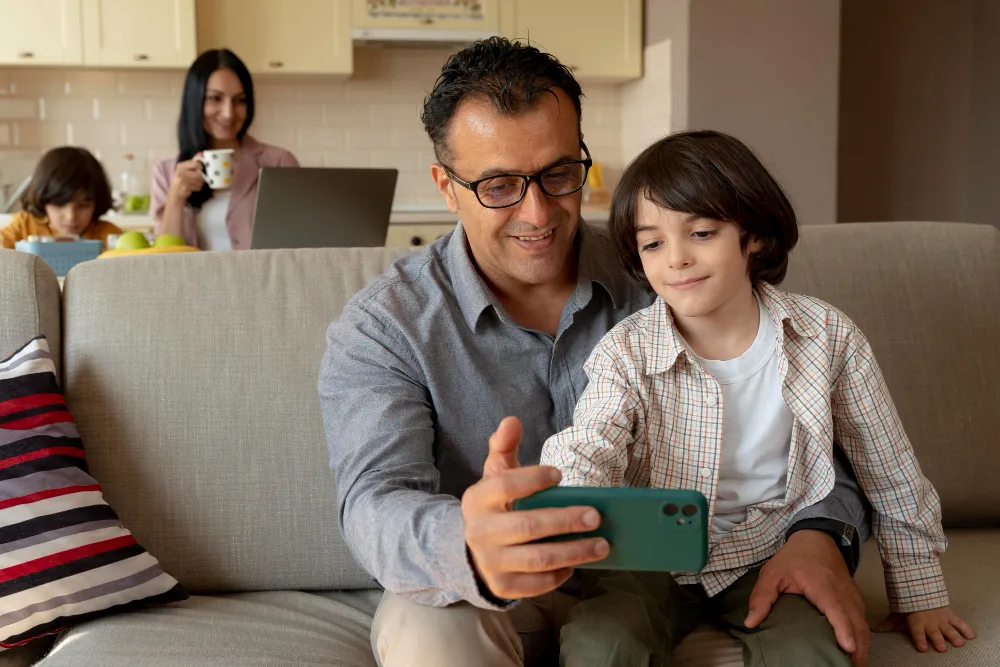Raising Money-Smart Kids: Best Apps for Financial Learning
Understand how the new apps make it easier for you to teach your children about finances and money. Check out more.
See good resources to financially educate children
Teaching children to handle money is a big challenge, but it is very possible with today’s technological innovations.
Cell phones and tablets have made the mission easier, with a series of good apps to help children and teenagers understand how money works.

And all in a practical and fun way!
In this article, we are going to explore the best options available, the benefits of teaching personal finance early, and how parents can use technology to raise financially smart kids.
Why teach kids about money?
Financial literacy is very important in America.
A recent study from the TIAA Institute showed that only 57% of American adults have a good understanding of basic personal finance concepts, such as inflation, compound interest, and investment diversification.
Teaching early helps to develop saving habits, encourage financial discipline, avoid unnecessary debt in youth, and prepare for long-term decisions. In this scenario, educational apps gain strength, uniting technology and learning.
Best apps to teach kids about money in the USA
Greenlight
Greenlight is considered one of the most complete apps to teach kids how to deal with money. Greenlight works as a debit card for minors, controlled by parents.
This way, the child can receive allowance directly in the app, using it for both in-store and online purchases.
The big difference is the possibility of dividing the allowance into categories: spend, save and invest.
In addition, parents receive real-time notifications of each transaction, being able to set limits or block the card if necessary.
Finally, the app also allows young people to learn to invest, with supervision, using the stock market.
GoHenry
Just like Greenlight, GoHenry offers a parent-controlled debit card.
The difference is in the gamified experience, with savings goals and rewards inside the app for a more playful learning process.
GoHenry also allows parents to set up tasks and responsibilities, such as cleaning the room or helping with the trash, and linking them to payments.
This way, young people can understand the relationship between effort and reward, big pillars of financial education.
BusyKid
BusyKid is ideal for families who want to teach the value of work, working as a digital chore chart where parents list household activities.
Children then receive payment for completing them, using the money to spend, save, or even donate to charities. All through the app.
This approach encourages not only money control, but also social responsibility and the importance of contributing to greater causes.
PiggyBot
Aimed at younger children, PiggyBot is a digital version of the traditional piggy bank, helping little ones track their allowance spending, set short-term goals, and record how they spend.
Simple and visual, PiggyBot is a great introduction to the concept of saving before spending.
FamZoo
FamZoo combines features of all the previous apps, with prepaid cards, allowance management, chore tracking, and even loan simulations.
Parents can “lend” money to their children, charging interest, to teach in practice how credit works.
It is a powerful tool for teenagers, preparing them for adult life with real experiences, but in a controlled and educational environment.
Benefits of digital financial learning
In addition to bringing children closer to the financial universe, apps offer additional advantages:
- Interactivity: learning becomes more engaging than books or lectures.
- Autonomy: children test their own financial choices, but always with parental supervision.
- Safety: Since the apps are designed for minors, they have extra layers of protection.
- Real-time education: every purchase or decision becomes an opportunity for immediate teaching.
How parents can maximize the use of apps
Although technology makes the process easier, parents still play an essential role. It is necessary to talk about money at home, using everyday situations to discuss budgeting.
Set goals together with the children, even using gifts like bikes and video games to teach saving as a way to achieve dreams.
Follow the app reports, using them as a starting point for weekly discussions about expenses and savings.
Also start by setting an example at home, since children learn much more from actions than from words, showing financial discipline in shopping and paying bills.






